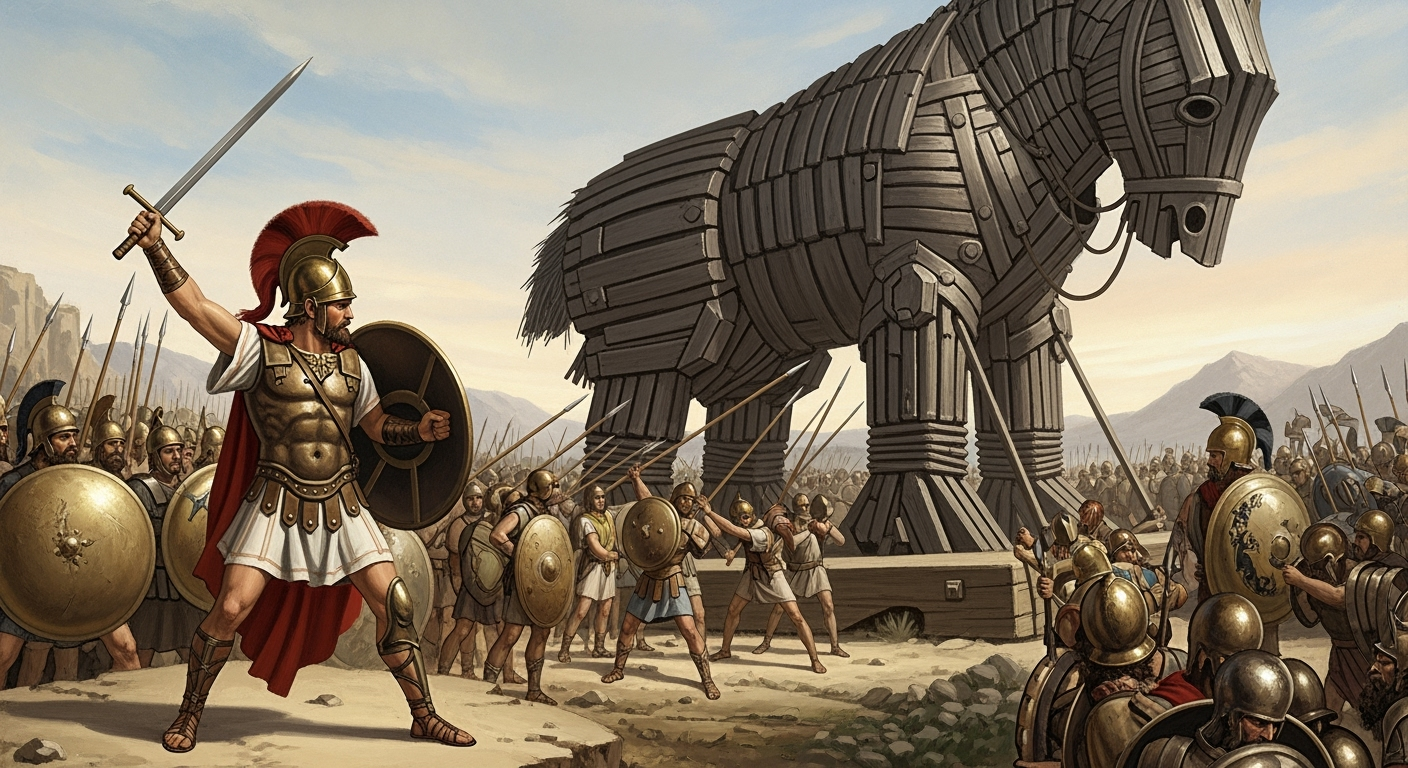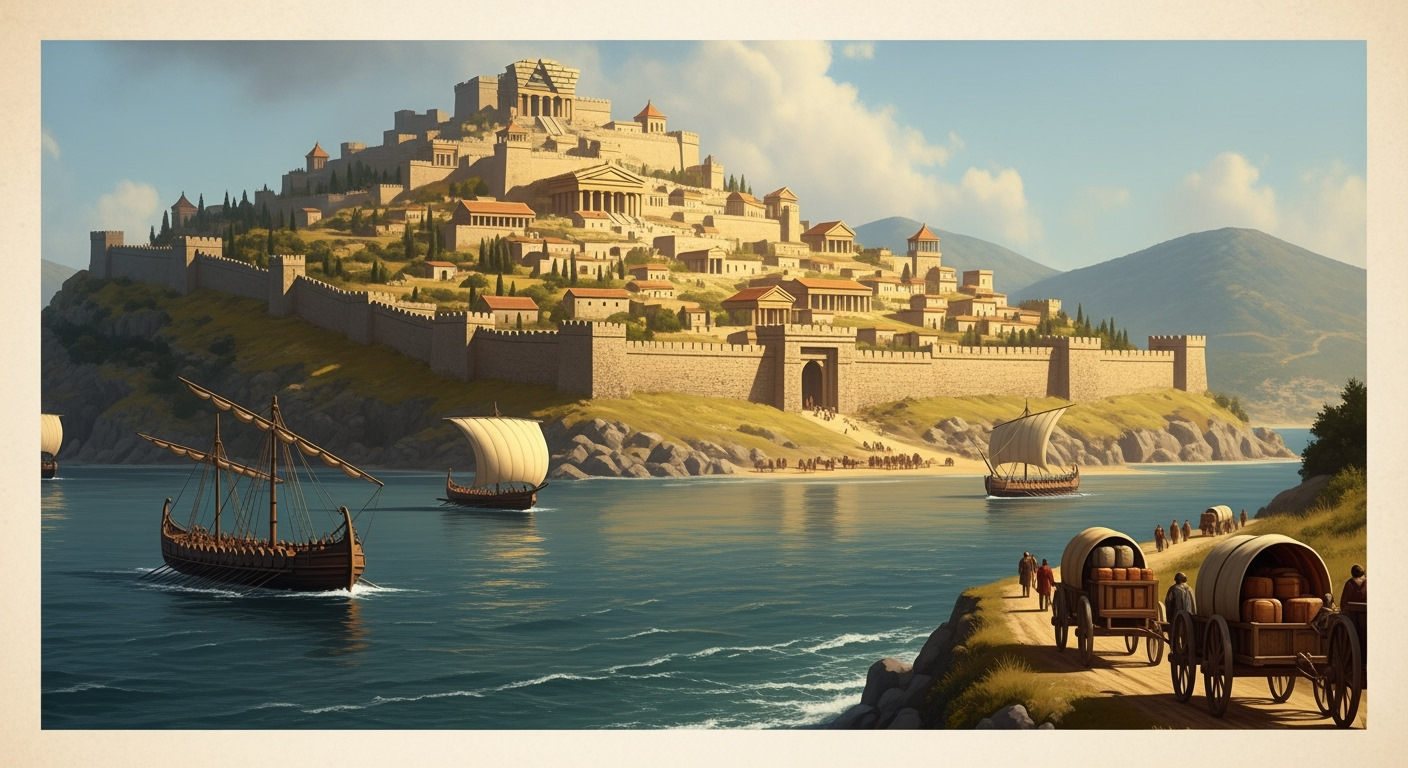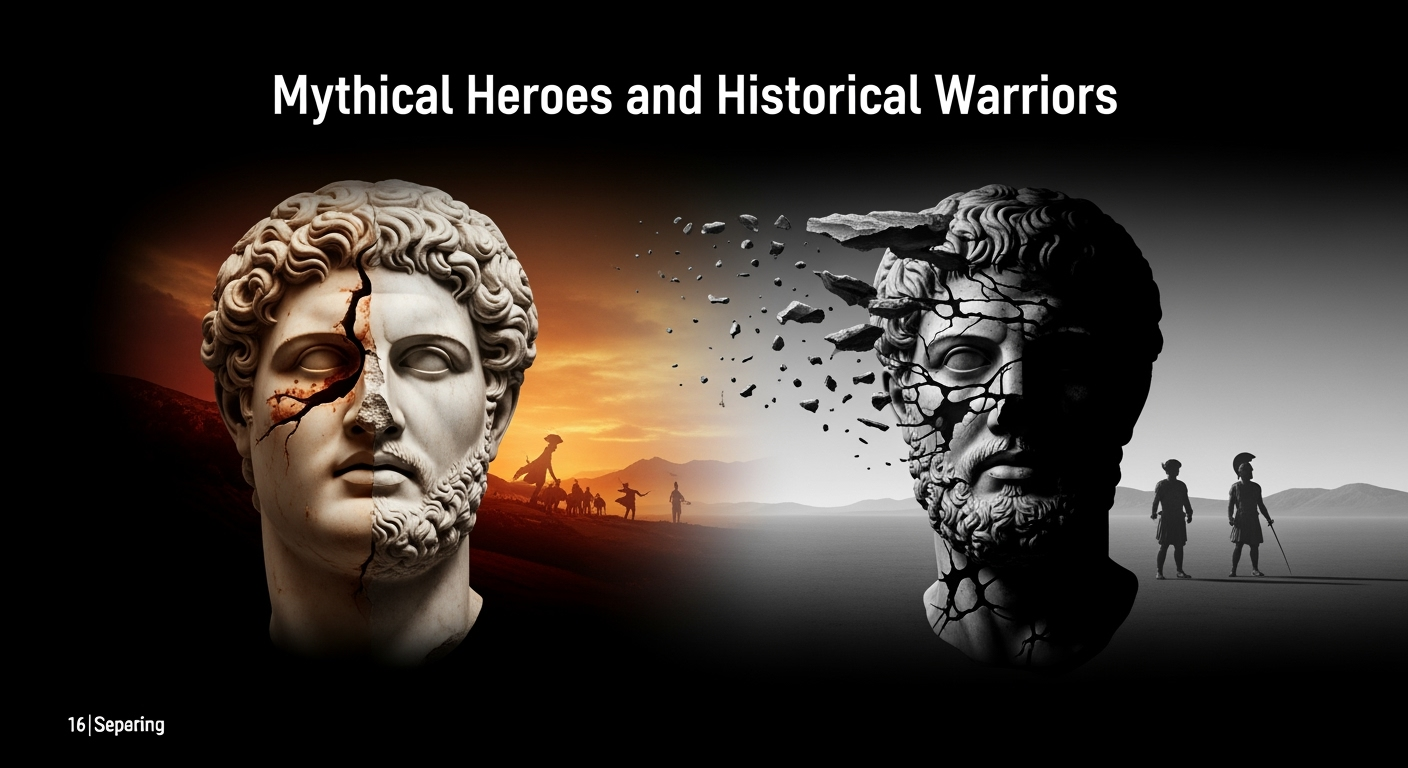The Trojan War- Separating Legend From History

The Trojan War: Separating Legend From History
Few stories from the ancient world have captured the imagination as much as the Trojan War. Immortalized in Homer’s Iliad and Odyssey, and retold countless times in plays, poems, films, and novels, it is a tale of gods and heroes, love and betrayal, bravery and tragedy. For centuries, people debated whether it was pure myth or a real conflict that shook the ancient Aegean. Archaeological discoveries in the last 150 years have added tantalizing clues, revealing that behind the legends may lie a war rooted in history. Separating fact from fiction shows us how myth and reality intertwine to create one of the world’s greatest stories.
The Epic Tradition
The Trojan War is best known from Homer’s Iliad, composed around the 8th century BCE. This epic poem describes a brief period during the war’s tenth and final year, focusing on the wrath of Achilles and the battles between Greek and Trojan heroes. Homer’s narrative includes gods who intervene in mortal affairs, magical armor forged by Hephaestus, and dramatic duels that feel more like theater than history.
Other ancient works expand the story. The Odyssey follows Odysseus on his long journey home after the war. Later Greek tragedies tell of events such as the sacrifice of Agamemnon’s daughter Iphigenia, the cunning Trojan Horse, and the destruction of Troy. These stories became central to Greek identity and were retold for centuries.
Yet Homer’s poems were composed centuries after the supposed events, passed down orally before being written. They are not eyewitness accounts but a blend of memory, imagination, and cultural ideals. So where does history fit in?

Was There a Real Troy?
For much of history, scholars doubted that Troy even existed. Many considered the Trojan War a purely mythical tale, much like Hercules’ labors or Jason and the Argonauts. That view changed in the 19th century when German archaeologist Heinrich Schliemann began excavations at Hisarlik in modern-day Turkey.
Schliemann believed this mound marked the site of ancient Troy. His dramatic discoveries included massive walls, towers, and layers of cities built on top of each other over centuries. One of these layers showed evidence of destruction by fire, fueling speculation that it was the city described by Homer.
While Schliemann’s methods were often crude—he damaged parts of the site in his rush to find “Priam’s treasure”—later archaeologists confirmed that Hisarlik was indeed an important city on the edge of the Aegean world. Multiple phases of occupation suggest a long and complex history, with one or more destructions that could align with memories preserved in myth.
The Historical Context
If a real Trojan War took place, it likely occurred in the Late Bronze Age, around the 12th or 13th century BCE. This was a time of powerful kingdoms and expanding trade networks across the eastern Mediterranean. Mycenaean Greece was thriving, with palaces such as Mycenae, Pylos, and Tiryns controlling territories and commanding armies. To the east, the Hittite Empire dominated Anatolia, while Egypt remained a major power to the south.
Troy’s location was strategic. Situated near the Dardanelles strait, it controlled access between the Aegean and Black Seas. Whoever ruled Troy could influence trade routes linking Europe and Asia. This made it a prize worth fighting for.
Hittite texts discovered in the 20th century provide intriguing evidence. They mention a city called Wilusa, which many scholars connect to “Ilios,” another name for Troy. These texts also describe conflicts between the Hittites and a western people called the Ahhiyawa, possibly the Achaeans, the Homeric Greeks. If so, there may have been real clashes over Troy, remembered centuries later in epic form.

Mythical Heroes and Historical Warriors
The Iliad gives us unforgettable characters: Achilles, the nearly invincible warrior with a fatal heel; Hector, the noble defender of Troy; and Odysseus, the clever strategist. But were they real individuals?
It is unlikely that these heroes existed exactly as described. Their exploits are too superhuman, their personalities too perfectly crafted for epic storytelling. Yet they may represent memories of real leaders or warriors whose deeds were magnified in oral tradition. Just as legends of King Arthur may reflect distant memories of a historical chieftain, Homer’s heroes could be composites of historical figures embellished over generations.
Archaeological finds of Mycenaean armor, chariots, and weapons match the descriptions in Homer to some degree, though the epics often exaggerate. The duels and speeches may be poetic invention, but the idea of heavily armed warriors clashing outside the walls of a fortified city fits well with what we know of Late Bronze Age warfare.

The Trojan Horse: Fact or Fiction?
Few images from the Trojan War are as famous as the Trojan Horse, the giant wooden structure used by the Greeks to trick their way into Troy. According to legend, the Greeks pretended to abandon the siege, leaving the horse as a supposed offering to the gods. The Trojans brought it inside their walls, only to unleash hidden Greek warriors who opened the gates for their comrades.
Did this really happen? Most historians believe the Trojan Horse is a myth, perhaps inspired by real tactics. The “horse” may symbolize a siege engine or battering ram, remembered metaphorically in later retellings. Some suggest it could represent an earthquake (as Poseidon, god of horses, was also associated with quakes), a natural disaster that weakened Troy’s defenses. Whatever its origin, the story captures the Greek admiration for cunning strategy as much as brute force.
Why Did Troy Fall?
If there was a real Trojan War, why did it happen? Homer says it was all over love: Paris of Troy abducted Helen, the beautiful wife of Menelaus, king of Sparta. The Greeks launched a thousand ships to bring her back.
This explanation, though romantic, is probably symbolic. Ancient wars were rarely fought over personal quarrels but over resources, trade, and power. Helen may represent the wealth or strategic importance of Troy, personified as the prize for which nations fought.
Archaeology shows that Troy was destroyed more than once. Fires, sieges, and possibly earthquakes all contributed. The most likely scenario is that Troy was attacked by Mycenaean Greeks seeking control of trade routes, with later poets transforming these conflicts into a grand saga of gods and heroes.
The Legacy of the Trojan War
Whether fact or fiction, the Trojan War shaped Western culture. For the ancient Greeks, it was a foundational story that defined values of honor, bravery, and fate. For later civilizations, it became a rich source of inspiration. Roman poets like Virgil retold the tale in the Aeneid, linking Rome’s origins to Trojan survivors. Medieval writers adapted the story to their own times, while modern authors and filmmakers continue to reinterpret it.
Archaeology has added depth to the legend, showing that behind Homer’s poetry was a real city in a real place, caught between powerful empires. The truth may never fully match the epic, but the blend of myth and history has made the Trojan War timeless.
The Trojan War sits at the crossroads of legend and history. Homer’s epics gave us a drama of gods, heroes, and destiny, but archaeology and historical research reveal a more complex picture: a strategic city, rival powers, and conflicts that may have echoed across the Bronze Age world.
In separating myth from reality, we see that the truth of the Trojan War lies somewhere in between. It was not exactly as Homer sang, but it was not pure invention either. The war reflects humanity’s tendency to remember, reshape, and retell history as story, turning battles into epics and warriors into legends. The city of Troy may have fallen long ago, but its tale has never stopped being told.
Disclaimer
This article is for educational and informational purposes only. While HistoryReveal.com strives for accuracy, historical interpretation may vary, and readers are encouraged to consult additional sources for deeper study.